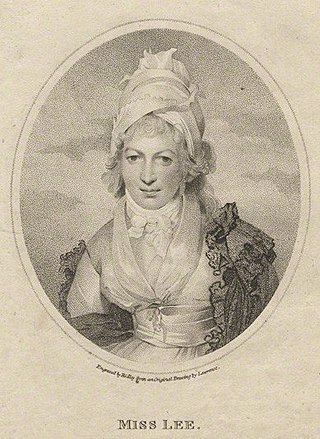
Sir Thomas Lawrence was an English portrait painter and the fourth president of the Royal Academy. A child prodigy, he was born in Bristol and began drawing in Devizes, where his father was an innkeeper at the Bear Hotel in the Market Square. At age ten, having moved to Bath, he was supporting his family with his pastel portraits. At 18, he went to London and soon established his reputation as a portrait painter in oils, receiving his first royal commission, a portrait of Queen Charlotte, in 1789. He stayed at the top of his profession until his death, aged 60, in 1830.

William Godwin was an English journalist, political philosopher and novelist. He is considered one of the first exponents of utilitarianism and the first modern proponent of anarchism. Godwin is most famous for two books that he published within the space of a year: An Enquiry Concerning Political Justice, an attack on political institutions, and Things as They Are; or, The Adventures of Caleb Williams, an early mystery novel which attacks aristocratic privilege. Based on the success of both, Godwin featured prominently in the radical circles of London in the 1790s. He wrote prolifically in the genres of novels, history and demography throughout his life.

Thomas Holcroft was an English dramatist, miscellanist, poet, novelist and translator. He was sympathetic to the early ideas of the French Revolution and helped Thomas Paine to publish the first part of The Rights of Man.

Amelia Opie was an English author who published numerous novels in the Romantic period up to 1828. A Whig supporter and Bluestocking, Opie was also a leading abolitionist in Norwich, England. Hers was the first of 187,000 names presented to the British Parliament on a petition from women to stop slavery.

Charles Kemble was a Welsh actor of a prominent theatre family.

Clara Mary Jane Clairmont, or Claire Clairmont as she was commonly known, was the stepsister of the writer Mary Shelley and the mother of Lord Byron's daughter Allegra. She is thought to be the subject of a poem by Percy Bysshe Shelley.

Sir William Beechey was a British portraitist during the golden age of British painting.

Sophia Lee was an English novelist, dramatist and educator. She was a formative writer of Gothic fiction.

William Lort Mansel was an English churchman and Cambridge fellow. He was Master of Trinity College, Cambridge from 1798 to his death in 1820, and also Bishop of Bristol from 1808 to 1820.
Frances Imlay, also known as Fanny Godwin and Frances Wollstonecraft, was the illegitimate daughter of the British feminist Mary Wollstonecraft and the American commercial speculator and diplomat Gilbert Imlay. Wollstonecraft wrote about her frequently in her later works. Fanny grew up in the household of anarchist political philosopher William Godwin, the widower of her mother, with his second wife Mary Jane Clairmont and their combined family of five children. Fanny's half-sister Mary grew up to write Frankenstein and married Percy Bysshe Shelley, a leading Romantic poet, who composed a poem on Fanny's death.
James Aickin, was an Irish stage actor who worked at the Edinburgh Theatre in Scotland and in theatres in the West End of London.

Richard Wroughton (1748–1822), was an actor, who worked mainly in Covent Garden and Drury Lane, and occasionally in the city of his birth, Bath.

Louisa, Countess of Craven, originally Louisa Brunton (1782–1860) was an English actress.

Charles Murray (1754–1821) was a Scottish actor and dramatist.

William Fisher Peach Dimond was a playwright of the early 19th-century who wrote about thirty works for the theatre, including plays, operas, musical entertainments and melodramas.
Lawrence Gahagan or Geoghegan (1735–1820) was an 18th/19th century Irish-born sculptor. He specialised in small bronze portrait busts.

Mothers of the Novel: 100 Good Women Writers Before Jane Austen (1986), by Dale Spender, is a foundational study for the reclamation project central to feminist literary studies in English in the late 1980s and 1990s.
Canterbury Tales is a collection of short stories and novellas, written by Harriet Lee and Sophia Lee and published in five volumes from 1797 to 1805. Sophia's contributions consisted of two tales and the narrative introduction to the first volume; the rest of the work is Harriet's, and formed the basis of Harriet Lee's legacy as an author.













